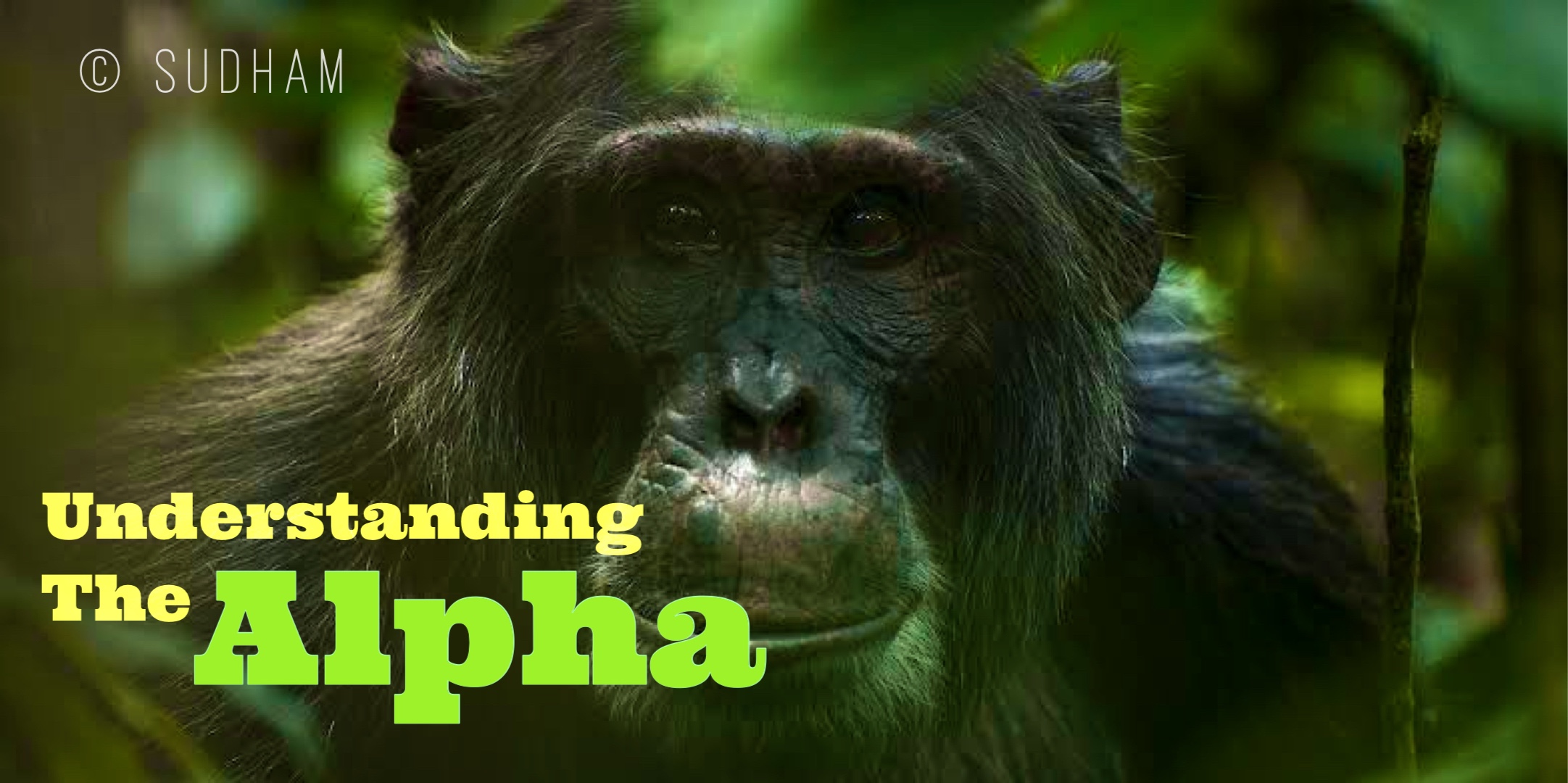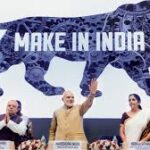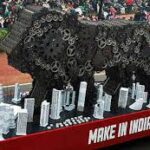Understanding the Alpha

CHANGE IS THE ONLY CONSTANT; so the adage goes. However, is EVERYTHING MUST CHANGE necessarily the sequitur? Is it always the case with ALPHAs or is that just a convenient stereotype?
I was watching a wildlife documentary recently and the parallels between corporate and jungle were drawing themselves out. I also remembered reading an article that mentioned that alphas make up to 70% of all senior executives.
While the concept largely drawn from primates and wolf packs, is based on the behaviour of the males of the species, we shall, for the purpose of this post remain gender agnostic.
Given the statistic quoted above, I have seen several people who would fit the ALPHA bill in my two decade plus experience. Some have been bosses, some peers and yet others subordinate as far as the hierarchical structure is concerned. Continuing the inherent sexual overtone to ALPHA behaviour, my observations are as much based on the dominatrices as they are on the dominators.
There fundamentally are two types of ALPHAs
Category A – The Bully
The minority that drives the stereotype. This category of ALPHAs is more about the self and hence the traits that they manifest are not necessarily all positive.
The belief system of The Bully is founded on the thoughts below:
- Power Demands (brazen) Display
Demonstrated power is a cornerstone for the bully. It can range from bravado to violence. The bully revels in a blood-bath and often relies on upheaval to signal change.
- Zero Sum Game
If there’s a winner there HAS to be a loser. It is not sufficient for the bully to succeed. The bully often relies on painting someone or something as the loser. The bully needs (sometimes shall create) the binary for credibility.
- Spoils Only to the Victors
The binary is extended to apportioning of the resources. The Bully shares the rewards with a select few creating a visible divide between the haves and the have nots.
- Citadels Are Built on Ruins
This is an unfortunate hallmark of The Bully. They believe that for the new order to come into existence the old order has to be erased. The Bully invariably dismantles the old without thought or consideration.
- Coteries and Sycophants
What usually starts-off with attraction to personal charisma of the ALPHA is gradually replaced by privileges. The loyalty of course, is continuously diminishing. Since a coterie of sycophants is encouraged over counsel, it invariably leads to the downfall of The Bully.
Category B – The Genuine Leader
Fortunately, the majority. They are the ones who manifest the positive aspects. They are confident and usually in control – both of the situation and their self. They win the trust of the tribe by solving problems. They are judicious in their use of consensus building and taking unilateral decisions.
The ethos of Leaders revolves around:
- Exemplary Courage
The Genuine Leader has a positive attitude with a bias for action. They would rather fail trying than not attempting. They are impatient but only with inaction. Success and failure, therefore, are mere outcomes.
- Handling Change
The Leader is driven by a vision. Able to deal with ambiguity, a good leader builds a bridge over the troubled waters by breaking it down into simpler steps for the tribe. Change if external, is not feared. If internal, has purpose.
- Equitable
A genuine leader is able to rise above personal likes or dislikes. They have a utilitarian view of their team and therefore is able to task and reward without playing favourites.
- Trust Built Authentically
The Leader delivers on his commitments. Failures if, where, and when are addressed instead of passing blame, being brushed aside or given justifications for.
- Line of Succession
Leaders plan. They can visualize a world without themselves in it. Succession, for the genuine leaders is not as much about continuity of stake as it is about sustaining growth. A good leader is unafraid of naming a successor.
From an anthropological perspective, whether it is corporate life or life in general, it is important to understand the ALPHA.
So, which kind of ALPHA do you see when you look around in your organization?
Or
Are you the ALPHA that others are seeing? If so, which kind?
Branded Nation: Are We Unwittingly Walking Into A Brand-trap?
In the aftermath of the 2014 elections, the Congress kept mentioning that it got blown away by BJP’s marketing blitzkrieg. It should not have come as a surprise to the Congress party though, since the direction of BJP’s strategic thinking was more or less set during A.B. Vajpayee’s tenure as the PM.
The failure of the India shining campaign made the Congress complacent and the BJP resilient. During the ten years they were away from power the BJP practiced and perfected the craft. Finally mounting the attack with its most potent weapon! The sustained digital presence that started with veteran leader L.K. Advani, the share of mind/conversation and something all marketers swear by – on-ground connect; all proved to be gold.
No doubt it has worked for BJP the political party and catapulted it into government. The think-tank reckons it might just work for the government as well.
A government publicizing its schemes and initiatives is nothing new. The Modi government in under an year has kicked off and launched several such schemes and initiatives with much fanfare.
A marked change from earlier has been the ‘Go to Market’. Each one of the initiatives has been supported with a well thought communication plan and activations. Whether it is the Swatch Bharat Abhiyan, the Make in India or the Pradhan Mantri Jan Dhan Yojna every element that could have been branded has been. There has also been a flurry of war cries, rallying cries and punch lines such “Minimum Government and Maximum Governance”, “No Red Tape, Only Red Carpet” etc.
The government needs to tread carefully in order not to fall into its own ‘Brand-trap’.
India as a nation has traditionally been a reluctant marketer and this new aggressive approach has been and should be accorded a cautious welcome both from within and from outside the country. After all, if one of the world’s largest markets has to get its rightful share of the investment pie the helmsmen need to do whatever it takes to catch the world’s eye. Having said that, as with any other product or service the product experience has to back the claim.
All marketing has an element of hyperbole in it. It is for the marketers to ensure that the product lives up to the promises that are made. Regardless of who and where ‘dissonance’ is a concept that all marketers need to be wary of. Few would disagree that in the current context brands, though created by marketers are ‘co-managed’ by the consumers. Therefore, while it is good to see the slick marketing plans for initiatives, it is also important to ensure that the surrounding ‘buzz’ and the ‘conversations’ about need to be managed better and need to have a positive ‘slant’.
As someone once said “A hen lays an egg and cackles, the catfish lays a million without making a sound. We all know whose eggs we eat!”
Bounce
Lost In Translation: Do Unrelated Brand Extensions Erode Brand Value In The Long Term?
Its election time in India. Starting April 07, the world’s biggest democracy shall go in for a marathon round of voting that would be spread over a month. The election jamboree has several contestants and in the fray are people from different walks of life. The noteworthy ones though are the contestants who have been in the public consciousness but for totally different reasons. If celebrities be considered individuals who are brands that they are courtesy their achievements/fame in their original profession. Their foray into politics therefore, is akin to a brand extension.
Now as marketers we are familiar with extensions and have seen many such examples. It is the author’s humble opinion that brand extensions into un-related categories are detrimental to the brand. Now I do not have empirical evidence to back this but more often than not, the brand attributes that made the brand successful in its space would not resonate with consumers in an un-related space. Yes there have been brave attempts at looking at a core set of values and carrying forward those elements that are relevant to the spaces related or otherwise that the brand is being carried into.
Since there is a constant back and forth amongst marketers regarding brands as people and people as brands (also the starting point of the current discussion), it would only be fair to look at things through Kapferer’s Brand Identity Prism
Just to refresh the model suggests that there are six facets to brand identity. As with individuals there is what gets projected and communicated and there is what gets received and understood.
- Physique: The brand in Its physical/tangible form eg. colour, packaging, product form etc.
- Personality: How the brand projects itself. Fun, young etc.
- Culture: A set of values that feed the brand.
- Relationship: the brand has with its consumers or stakeholders i.e. aspirational, inspiring, motivating, ostentatious etc
- Reflection: An image a brand creates regarding who its typical user would be. Example Blackberry with QWERTY phones for executives.
- Self-image: What the brand does to its consumer’s image of self. For example, ladies hand bags from fashion brands perhaps project “I can afford it” for a bulk of their consumers.
Coming back, the contestants in this election range from the “have-beens” to the “could not have beens”. Movie stars, sports persons and business icons they are all there. If one were to critically assess any one of them with respect to the brand that they have built in terms of elements 2 through 6 listed above with the assumption that physique is something they cannot easily change, most would find diminished relevance of their established identity in the new space.
Yes there have people who have translated their success in one field into success in another but the examples are few and far between.
I will defend my case with two examples one a business brand that made an extension into an unrelated field, another an individual. Both brands that attained dizzying heights forayed into an unrelated spaces and ended up eroding if not decimating brand value in the final analysis.
Exhibit#1 The individual: Amitabh Bachchan arguably India’s biggest movie star and an icon for millions of Indians across generations. The Big B as he is popularly referred to made according to him one of the biggest mistakes in life when he chose to enter politics. A super-star he contested elections from Allahabad, UP, India and dislodged a stalwart. What followed were years of turmoil as he got embroiled in allegations of corruption that tarnished his image. It took Amitabh Bachchan the brand over a decade to rise from the ashes, a deed that not all can perform.
https://www.youtube.com/watch?v=6jj7z7rt_9E
Exhibit#2 Kingfisher: Originally a beer brand it was extended to an airlines. The brand attempted to translate “the good times” value to the service industry. From offering a low-fares to the concept of premium economy the brand threw everything including the kitchen sink at the customers. Perhaps one of the better executed transitions only from a process standpoint. The change in logo from a perched Kingfisher to a flying one, the launch and the initial follow through were commendable. However, the ambitions were all consuming. The brand and the business were unable to reduce the revenues vs expenses gap and finally the airline operations that commenced sometime in 2004-05 came to a grinding halt in 2012-13. There is sure to have been damage of the episode on Kingfisher the beer brand, pretty sure some enthusiasts would be out there collecting the before and after data for Kingfisher.
Another Brick in the Wall: The Branding of Education
 There have been brands and then there have been BRANDS. There are those about which books are written, around which theories are propounded and then there are those that people just desire. The brands that are meant for few. Their very distance is what increases their appeal. The harder to own the more desirable they are.
There have been brands and then there have been BRANDS. There are those about which books are written, around which theories are propounded and then there are those that people just desire. The brands that are meant for few. Their very distance is what increases their appeal. The harder to own the more desirable they are.These brands span industries and product/service categories. From diamond to a perfume, clothing to cars categories have a brand that is to die for. What all of them bring with them is a pride of association.
The business of education is no different. There are universities, colleges and schools that are brands. We must have, as students, parents, employees, entrepreneurs, friends we have always looked up to, been in awe of, given better treatment to people because of their alma mater.
If you step back, these are brands that have been built on performance. Over time as more and more alumnus of these institutions succeed the higher they climb. The other parameter also has been how easy or difficult it has been to become a part of these brands. More than any other thing the respect for these institutions emerges from the knowledge that only the capable are deemed deserving. This perhaps is the fundamental premise on which the promise of delivery rests.
A recent conversation with friends over dinner brought to the fore how the parameters of assessment have changed. The reference of course was to schools in and around the capital city. If you are a parent trying to get your child admitted into school or have undergone the process (read trauma) in recent years you will have your strong views about it too.
The opposing arguments in the debate rested on performance on one side and promise on the other. Now perceptions can be founded on either. This is where branding comes in I suppose.
There have and will always be top ten lists and rankings based pretty much anything ranging hearsay to actual surveys. We may choose to use or trash them but sure as the sun shines we seldom ignore them. Unfortunately, in the Google age they are the chosen method of settling an argument.
Several “world” schools and “international” schools have come up in and around Delhi in the past 10 years or so. There are quite a few that get counted amongst the finest and the best. Brands in their own right. Brands that are desired. Brands that signal the formation of a new order.
The founding pillars of these brands (institutions) are not past performance. Truth be spoken they have hardly been around long enough to establish a track record or to claim their share in the greatness of the alumni. Yet they are desired. What then is the formula for their success?
A professor once told me this and it stuck. Brands can be made desirable or aspirational by pressing any or all these levers that drive brand perception.
Product: Brands that become aspirational not on their steam but the virtue of the product itself. Example brands producing diamond jewelry.
Process: Brands that create products or services with the help of a unique ingredient or exclusive process. The “Nobody does it the way we do” promise. Example The Rolls Royce, A Breitling watch, Häagen-Dazs ice-cream.
Performance: Brands that deliver in the superlative space putting them at the top of the heap because not many can match the performance. The first, the fastest, the widest, the best…in short superlative. Example super luxury automobiles
Premium: Well it’s not just the price that we are talking of here it is anything extra even the wait. Typically it is an associated P and a brand that has any of the P’s mentioned above as its rai·son d’être would automatically attract a premium. However, there have been examples of brands that have relied on a premium alone to drive the perception of superior quality. The service industry has a few examples in restaurants and spas that rely on pricing themselves high to drive the perception of exclusivity.
Question is as the new world schools lay their brickwork which one of the 4P’s is driving their desirability? For now though, it doesn’t seem to be performance.
As Einstein said Education is what remains after one has forgotten what one has learned in school.
Wag the Dog: When Brands Become Victims of Their Own Image
Marketers spend their working lives creating, feeding and maintaining a Brand Image. Our products, our actions and our communication are constantly building the perception that we want our consumers and stakeholders to form.
A senior colleague of mine used to constantly say “Perception is Reality”. The perceptions we carefully cultivate and create the way the world sees us. Sometimes though we start seeing ourselves in the same way. We allow perception to become our reality. According to Edward de Bono studies show that 90% of the error in thinking is due to error in perception.
Shall take two recent examples to make my point. One that demonstrates how difficult it is to shake away the perceptions that you build and the other an example of how it consumes reality.
Case1: Tata Nano
A car that captured the minds of millions, alas that’s all that it did. It was a car several years into the making perhaps a couple of years too many. All the while that it was in the works, the communication that was being sent out was steadily building the perception that this would be the lowest cost car. The car even before its arrival was touted as a revolution that would change the way India commutes with a potential to expand the category by 65%. In a sense it was seen as a symbol of economic socialism (if there is such a term).
The car was launched in a style reminiscent of the India of the license-permit era and was overbooked a few times over. Somewhere, the product had got so trapped in the created image of being the lowest cost production that it stopped being a car. The very reasons that can be attributed to the huge build up in expectations could be assigned to the disappointment amongst the consumers. A car in India is much more than a mode of transport. It is the flag-bearer of family status and we are not talking “badge-value” here. Here was a car that was the lowest priced all right but was not what a “car” meant in India. Things like size, ability to seat a family comfortably, boot access & space etc. all came back to haunt Nano.
Ever since Nano, has been making attempts to shake-off the baggage. From being India’s key to happiness to being Awesome they have pushed the communication in a different direction. Its recent campaign #NanoTwist that intends to tout its size as a virtue. Will they be able to move the brand perception from “Low Cost” to “Stylish” Will the change revive the brand? We’ll find out as this fiscal ends.
From:
[youtube=http://www.youtube.com/watch?v=vkiJVHgCrLo]
To:
[youtube=http://www.youtube.com/watch?v=icNABYGG5yQ]
Case2: AAP
I am writing this as a rejoinder to my first post AAP ka Brand: Tips for Sweeping Popularity. This one is more topical and perhaps a view brewing in many social circles. The political build-up in the national capital again begs to ask the question whether the recently successful political party has been able to transition from being an activist to an administrator. From being a poster boy the Delhi CM has become the trending joke on social media all within a span of 3 weeks.
One of the key pillars of the AAP the brand was activism. The protests and confrontations with authorities are the foundations of the success of AAP. Though AAP is the party at the helm of affairs in the state of Delhi, the activism and protests continue. Somewhere the theory seems to be what has worked in favour of the party thus shall continue to yield benefits.
[youtube=http://www.youtube.com/watch?v=dd9AQeD9hxQ]
How accurate or flawed the theory is shall be reflected by Aam Aadmi Party’s ability to stay in office for the allotted term and later during this year their performance in the General Elections.
For the moment though, it seems to be a case of the tail wagging the dog.










